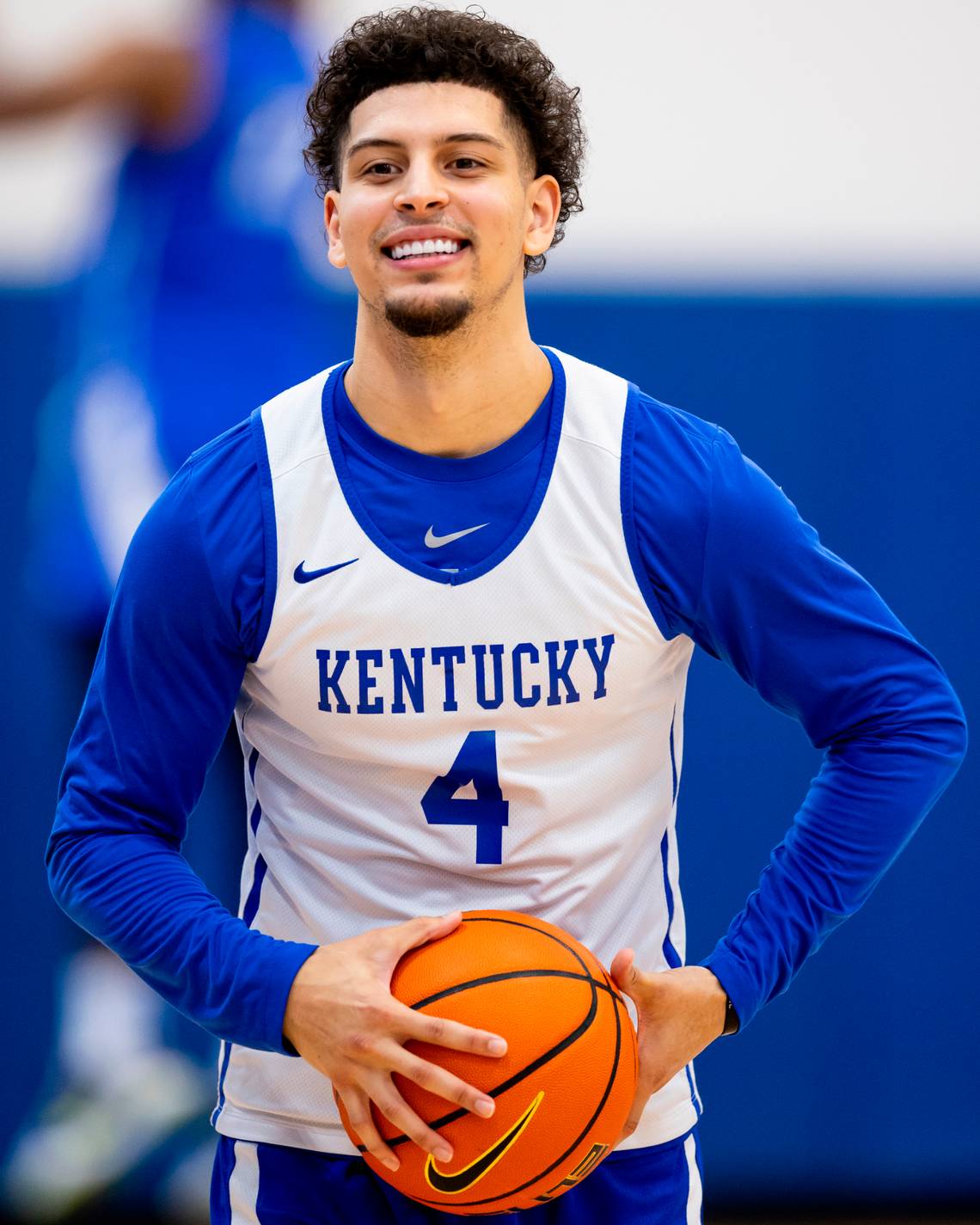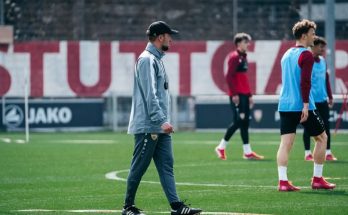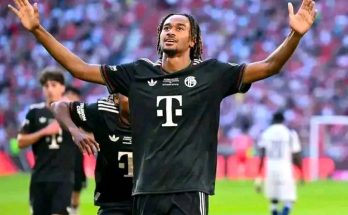Koby Brea’s name may not have carried the same weight as some of the early-season college basketball stars, but the Kentucky Wildcats sharpshooter is quickly emerging as one of the most intriguing prospects in the upcoming NBA Draft. Once considered a fringe second-rounder at best, Brea’s stock is surging, and with good reason. Teams across the league have taken notice of his elite shooting mechanics, clutch shot-making ability, and growing versatility on both ends of the floor.
The journey for Brea to this point has been anything but typical. A Bronx native, Brea began his collegiate career at Dayton, where he steadily developed into one of the country’s most accurate perimeter threats. But it wasn’t until he transferred to Kentucky and stepped into a bigger spotlight that his profile truly exploded. Surrounded by top-tier talent and playing under the pressure that comes with donning a Wildcats jersey, Brea didn’t shrink—he soared. His deep range and smooth release made him a deadly weapon for Kentucky, often spacing the floor for slashing guards and drawing the attention of defenders well beyond the arc.
It’s that shooting ability that scouts are obsessing over. In today’s NBA, spacing is king. Teams are built around the three-point shot, and shooters like Brea are increasingly valuable. His ability to hit shots off the catch, off movement, and in transition has executives and coaches salivating. He’s not just a standstill shooter; he’s a threat from anywhere, at any time. In a league desperate for gravity-generating wings who can stretch defenses and keep spacing optimal for stars, Brea fits the mold perfectly.
But it’s more than just shooting. What’s fueling his ascent up draft boards is the realization that he’s more than a specialist. Brea has developed into a capable defender, with improved foot speed, awareness, and strength allowing him to guard multiple positions. He’s not going to lock down the opposing team’s best scorer every night, but he’s shown enough agility and effort to hold his own in switch-heavy defensive schemes. Combine that with his high basketball IQ and strong positional instincts, and he’s become a far more complete player than many initially expected.
That completeness is what’s catching the eye of front offices. He doesn’t need the ball in his hands to make an impact. He cuts with purpose, relocates smartly, and consistently makes the right read. These are the subtle elements that separate the good from the great in the NBA role player ecosystem. Every team needs a guy who can fill in the gaps, do the little things, and knock down open shots when it matters. Brea looks the part.
His performance in some of Kentucky’s biggest games this past season has also helped his cause. Against top-ranked opponents and in high-pressure environments, Brea didn’t just survive—he thrived. He hit dagger threes, made the extra pass, and defended with energy. That kind of production in marquee moments doesn’t go unnoticed. NBA evaluators want players who can handle the moment, and Brea’s cool demeanor and consistent play have made him a trusted figure in crunch time.
Work ethic is another critical piece of the puzzle. Brea has earned praise from Kentucky’s staff and teammates for his professionalism, dedication, and drive. He’s known as one of the first in the gym and one of the last to leave. That kind of mentality matters, especially for second-round picks or end-of-first-round players who may not be given immediate opportunities. Coaches want to know a player is going to stay ready and keep improving. With Brea, there’s little doubt.
And the numbers back it up. Brea shot over 44 percent from three during the season on high volume and against elite defenders. That’s not just good—it’s elite. And when you factor in his free throw percentage, which hovered around 90 percent, it becomes clear that his shooting touch is pure and projectable. These indicators suggest he won’t just be a flash in the pan, but someone whose stroke will translate to the next level.
Another key factor in Brea’s draft rise is how well he performed in recent workouts and private scrimmages. According to reports from league insiders, Brea has impressed during team visits, showcasing not just his on-court skill set but also his communication, coachability, and grasp of the game. Some scouts have compared his demeanor and growth trajectory to players like Duncan Robinson or Desmond Bane—guys who weren’t top picks but developed into highly effective NBA contributors thanks to their elite shooting and constant effort.
There’s also a growing belief that Brea could be one of the draft’s best value picks. In a class with plenty of uncertainty at the top, teams picking in the late first or early second round are looking for players with clearly defined roles who can contribute quickly. Brea fits that mold to a T. He doesn’t need to be a star to make a team better. He just needs to continue doing what he’s already shown he can do: knock down threes, play within the system, and hold his own defensively.
That sort of plug-and-play ability is crucial in a league where patience is thin and windows for success are narrow. Rookies who can’t figure it out quickly are often passed over in favor of veterans. Brea doesn’t look like someone who will need years in the G-League to find his rhythm. He’s already shown he can play alongside elite talent and still be impactful, and that bodes well for his NBA transition.
If there’s a question mark, it’s whether Brea can continue to add more to his game off the dribble. While he’s improved as a secondary playmaker and shown flashes of being able to attack closeouts, he’s not yet someone who’s going to consistently create offense on his own. That said, not every player needs to be a primary initiator, and in Brea’s case, his role isn’t likely to require much isolation play or high-usage possessions.
Still, some teams may look at his athletic profile and wonder how much more room for growth there is. He’s a solid but not explosive athlete, and while he moves well, he doesn’t have the elite burst or vertical pop that many wings in today’s NBA possess. But what he may lack in raw athleticism, he makes up for in precision and poise. Not every role player needs to jump out of the gym—they just need to know how to play, and Brea does.
Ultimately, what’s become abundantly clear is that Koby Brea is a winner. He makes winning plays. He understands the value of spacing, the importance of timely rotations, and the need to stay locked in regardless of whether he’s shooting 10 times or twice in a game. Those qualities, combined with one of the purest strokes in college basketball, have vaulted him from relative obscurity into serious draft consideration.
Where he ultimately lands remains to be seen, but don’t be surprised if a team with championship aspirations snags him late in the first round or early in the second. He’s the kind of player who could step into a playoff-caliber roster and give meaningful minutes from day one. And with his work ethic and upward trajectory, the ceiling may be higher than anyone initially thought.
In a draft full of question marks, Koby Brea is becoming one of the most reliable answers. He shoots the lights out, plays the game the right way, and embraces the grind. For NBA teams searching for spacing, smarts, and shooting, he might just be the hidden gem they’ve been waiting for. The climb up draft boards isn’t accidental—it’s earned. And if his recent rise is any indication, Koby Brea is just getting started.



